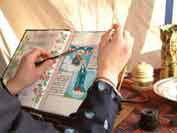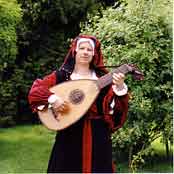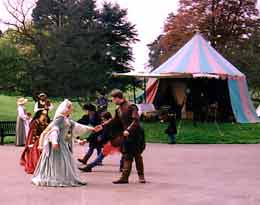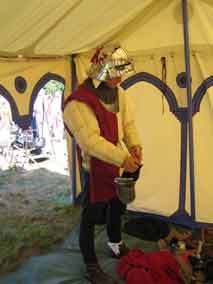| Archery |
| Brewing |
| Calligraphy & writing |
| Combat |
| Cooking |
| Dance |
| Etiquette |
| Household life |
| Medicine |
| Music |
| Needlework |
| Playacting |
| Religion |
| Storytelling |
Res Miranda demonstrated a broad range of activities and skills

| relating to the accomplishments expected of the nobility. Few of the common people could read or write and hand copied and illuminated books were the preserve of the wealthy nobility and of religious institutions, the larger of which had libraries - and also monks who specialised in copying and painting. |

| Many people played music but only a gentlwoman would possess an instrument such as a lute. The strings were made of cat gut and are arranged in pairs. It was usual to tune the highest string to its limits and much time was spent in making the tuning of the pairs of strings accord using the simple wooden tuning pegs. Such was the value of the strings that a set of "minnikins", the highest strings, was a gift that Elizabeth I would not disdain. |

| Everybody danced: the peasants had their bransles (pronounced "brawls") which were ususally danced in circles, the nobility had a variety of more formal and elaborate dances. |

| All men would be expected to have skill at arms: the peasantry were enouraged to engage in archery and used a variety of weapons such as maces, pikes and axes; others studied swordsmanship which demanded a thorough training. To learn more about the daily activities of the medieval and Tudor periods which REs Miranda engaged in, follow the links at the left. |